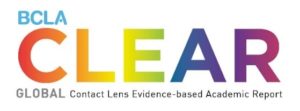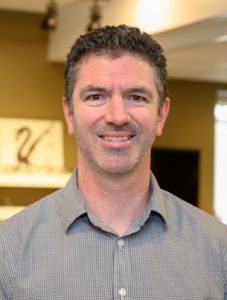WATERLOO, Ontario, November 12, 2021—Issue 62 of Contact Lens Update, now available for free from the Centre for Ocular Research & Education (CORE), explores the impact of digital device use on the eye. Each story provides a unique perspective on whether increasing use of screens by adults and children affects ocular comfort and if such behaviors can ultimately lead to dry eye disease.
Highly relevant for an increasingly screen-dependent society, the issue reviews and summarizes current research to provide practical, evidence-based advice for eye care practitioners to use with patients.

James Wolffsohn’s opening editorial provides a thorough review of the possible links between dry eye disease and digital device use. He discusses the prevalence of dry eye disease in general and in digital device users specifically, and reviews the role of blinking. He then highlights the evidence for changes to the meibomian glands that have been associated with screen use.

In the feature article, Bridgitte Shen Lee, co-founder of Vision Optique, explains key findings from the paper she co-authored that examines the dry eye-screen relationship. This includes peer-to-peer advice to help manage patients who present with the issue.

Two other articles focus on children, illustrating how increased screen use is impacting ocular findings and comfort at an early age. Ngozi Chidi-Egboka, a PhD candidate at UNSW Sydney, shares the results of a recent poster that investigates ocular comfort and blinking in children while using a smartphone. She describes how blink rate and reports of ocular symptoms occurred within just ten minutes of use.

Long hours of screen use associated with early and significant meibomian gland changes are highlighted in the case study from Leslie O’Dell, medical director of Medical Optometry America. She shares clinical insights from her experience of managing a nine-year-old who experienced these alterations, which serves as an important reminder for proactive and early investigation across all ages.
Over the past decade, the percentage of U.S. adults who report owning a smartphone has skyrocketed from 35% to 85%, according to the Pew Research Center. Among children and teens, the percentage who spent more than four hours per day with electronic devices approximately doubled last year compared to before the pandemic, according to research from the Global Myopia Awareness Coalition and Ipsos.
“Digital screen use has markedly increased over time, further accelerated by the COVID-19 pandemic,” said Lyndon Jones, CORE’s director. “We are only just beginning to understand the full impact that such intensity may have on the ocular surface of adults and children. This issue consolidates some of the latest knowledge and practical guidance, helping eye care practitioners immediately translate research into better care and outcomes.”
Published six times per year, Contact Lens Update provides a global platform for unbiased clinical insights based in current research. Since 2011, each issue has provided dependable and up-to-date ocular health information for more than 60,000 leading eye care professionals.
In addition to a complete archive of back issues, ContactLensUpdate.com offers a resource library that provides no-cost professional tools, patient resources, images and video. It also houses complementary technical training videos produced by International Association of Contact Lens Educators, plus an industry glossary. Industry professionals can access the latest issue directly from ContactLensUpdate.com or quickly sign up for email receipt of future issues.
The publication receives support from the educational arms of Alcon, CooperVision, and Johnson & Johnson Vision.
# # #
About the Centre for Ocular Research & Education (CORE)
The Centre for Ocular Research & Education (CORE) was established in 1988 at the University of Waterloo’s School of Optometry & Vision Science. Over the next three decades, the organization evolved from a three-person operation into a thriving hub of basic and applied research, collaborating with sponsors, agencies and academia on advanced biosciences, clinical research and education. Its uncompromising independence and results of the highest quality have been at the heart of many of the most prominent advances in eye health. Today, its approximately 50-person team serves a range of ophthalmic sectors, including medical devices, ocular pharmaceuticals, digital technology and others, with a focus on the anterior segment. For more information, please visit core.uwaterloo.ca.
MEDIA CONTACTS
Aimee J. Lewis or Mike McDougall, APR, Fellow PRSA, McDougall Communications for CORE
aimee@mcdougallpr.com +1.585.414.9838 | mike@mcdougallpr.com +1.585.545.1815









 WATERLOO, Ontario, June 15, 2021—The latest issue of
WATERLOO, Ontario, June 15, 2021—The latest issue of 




